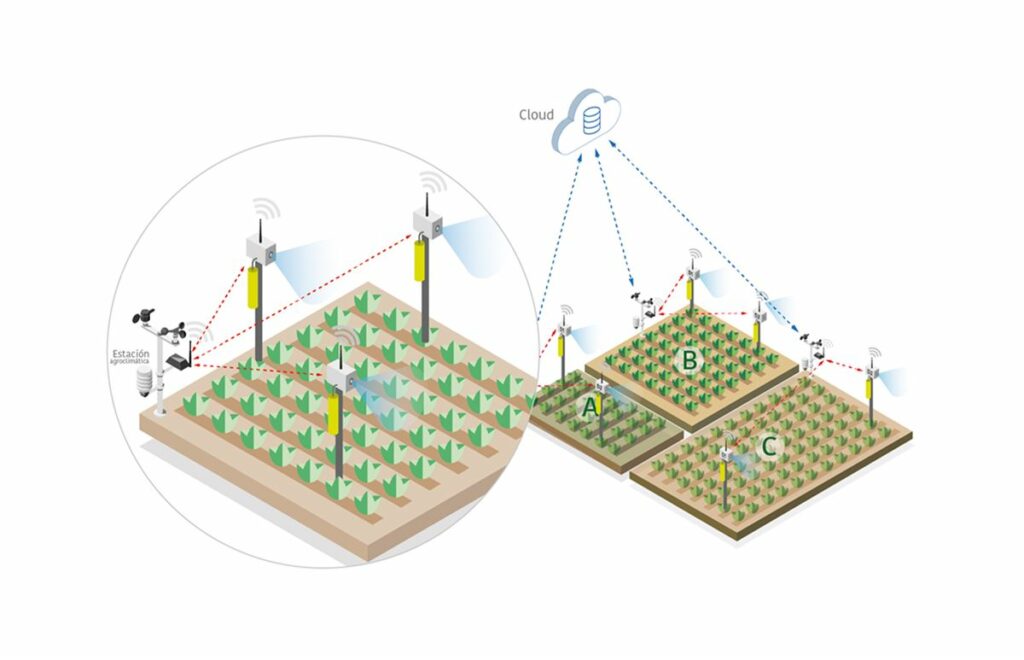Project MicroIDD-LoRa
File
2019
I+D
Encore-lab
Gateways, Nodos, Shield.
Project description
LoRa (Long Range) technology is relatively new. The first chips date back to 2013. LoRa is owned by Semtech, so most of the chips are designed and manufactured by Semtech. There are only two other different models developed by Microchip, the SAM R34/R35 and RN2483/RN2903, the former being a LoRa chip set with microcontroller and various forms of connection and the latter a chip that incorporates LoRaWAN directly.
On the other hand, there are chips specifically prepared to function as gateways. They are developed by Semtech, and there are two different models SX1301 and SX1308 differentiated in the working temperature range These chips require the use of one or more RF (radio frequency) chips which are sold separately (SX1255, SX1257 and SX1268).
In terms of complete communication shields, there is more variety. In addition to the development kits offered by Semtech, there are also shields prepared for Arduino, for Raspberry or those that include a microprocessor on the same chip..
The aim of the study was to create a proprietary protocol based on LoRA technology that would enable lower energy consumption than had been achieved so far by existing protocols standardised by manufacturers.
This high energy consumption reduced the battery life of devices that had to operate autonomously.


Reply from Encore-Lab
At the beginning of the project, a study of LoRa technology was carried out, followed by a comparison of the different LoRa chips available on the market, both transducer chips and those specifically prepared to function as a gateway.
After selecting the LoRa chip, the PCB design phase began. Good shield design is extremely important.
An EMI shield was added to prevent unwanted RF emission, the routing of certain paths alternatively or purely aesthetic changes such as the position and size of the identifiers of each element.
Results
The innovations brought about by the project were as follows:
- Development of a proprietary protocol for the transmission of small amounts of information.
- Substantial savings in the energy consumption of the devices, allowing useful lives of up to 10 years, something unthinkable until now.
- Reduction of the number of recharging cycles in stations with solar panels and reduction of the size of the solar panel.
The development of the new protocol has enabled Encore Lab to connect its Mini agroclimatic stations to Cesens V2 stations, thus creating a joint network. The advantage is that with only one V2 station connecting to GSM it is possible to cover a much larger area, connecting the Mini stations via the newly developed protocol.
The Cesens V2 station connects to the server, thus saving costs on the one hand and increasing battery life on the other

